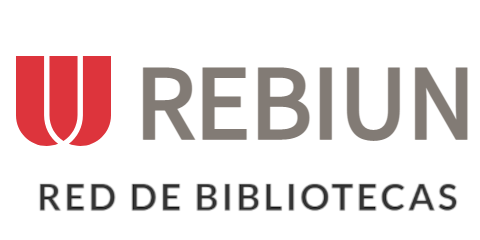Cinética de la Adsorción de Plaguicidas en Compuestos de Grafeno: Una Revisión
Resumen
El incremento de la concentración de plaguicidas en cuerpos de agua de los últimos años puede eliminarse por adsorción. Esta revisión se tomó los trabajos desde 2010 a 2022 considerando como criterios de selección trabajos se tuvo que sea adsorción de algún plagicida con compuestos de grafeno y además se haya estudiado su cinética e isotermas de adsorción pricipalmente, separadas en cuatro etapas: Diseño de la investigación, realización de la revisión, análisis y finalmente la estructuración y redacción. Al analizar los trabajos se encontró que el pH, concentración inicial del plaguicida, relación volumen y adsorbente, temperatura de reacción, tiempo de contacto, temperatura, densidad de electrones π, área superficial específica, tiempo para el estado de equilibrio y condiciones óptimas para la pirólisis (es caso aislado), son factores que pueden influir directamente la cinética de adsorción de los plaguicidas. Este proceso se lleva a cabo por la formación de enlaces π (como enlaces π, π-π, π-alquilo, π-alcalinos, π-σ, π-apiladas y en forma de T), interacciones electrostáticas e iónicas que permiten que el plaguicida se adsorba en los diferentes compuestos de grafeno ayudándose con los átomos capaces de donar electrones como el azufre, nitrógeno, oxígeno, fósforo o precursores de puentes de hidrógeno.
Descargas
Citas
Abubakar, Y., Tijjani, H., Egbuna, C., Adetunji, C. O., Kala, S., Kryeziu, T. L., Ifemeje, J. C., & Patrick-Iwuanyanwu, K. C. (2020). Chapter 3 - Pesticides, History, and Classification (C. Egbuna & B. B. T.-N. R. for P. Sawicka Disease and Weed Control, Eds.; pp. 29–42). Academic Press. https://doi.org/https://doi.org/10.1016/B978-0-12-819304-4.00003-8
Agarwal, S., Sadeghi, N., Tyagi, I., Gupta, V. K., & Fakhri, A. (2016). Adsorption of toxic carbamate pesticide oxamyl from liquid phase by newly synthesized and characterized graphene quantum dots nanomaterials. Journal of Colloid and Interface Science, 478, 430–438. https://doi.org/10.1016/j.jcis.2016.06.029
Ali, I., Alharbi, O. M. L., ALOthman, Z. A., Al-Mohaimeed, A. M., & Alwarthan, A. (2019). Modeling of fenuron pesticide adsorption on CNTs for mechanistic insight and removal in water. Environmental Research, 170, 389–397. https://doi.org/10.1016/j.envres.2018.12.066
Al-Shaalan, N. H., Ali, I., ALOthman, Z. A., Al-Wahaibi, L. H., & Alabdulmonem, H. (2019). High performance removal and simulation studies of diuron pesticide in water on MWCNTs. Journal of Molecular Liquids, 289. https://doi.org/10.1016/j.molliq.2019.111039
Andrade, M. B., Santos, T. R. T., Fernandes Silva, M., Vieira, M. F., Bergamasco, R., & Hamoudi, S. (2019). Graphene oxide impregnated with iron oxide nanoparticles for the removal of atrazine from the aqueous medium. Separation Science and Technology (Philadelphia), 54(16), 2653–2670. https://doi.org/10.1080/01496395.2018.1549077
Ayawei, N., Ebelegi, A. N., & Wankasi, D. (2017). Modelling and Interpretation of Adsorption Isotherms. Journal of Chemistry, 2017, 1–10. https://doi.org/10.1155/2017/3039817
Azizian, S. (2004). Kinetic models of sorption: A theoretical analysis. Journal of Colloid and Interface Science, 276(1), 47–52. https://doi.org/10.1016/j.jcis.2004.03.048
Azizzadeh, A., Amooey, A. A., & Ghasemi, S. (2022). Ternary metal-organic framework/multi-walled carbon nanotube/iron oxide nanocomposite for removal of butachlor pesticide. Environmental Sciences Europe, 34(1). https://doi.org/10.1186/s12302-022-00627-x
Bhanvase, B. A., Shende, T. P., & Sonawane, S. H. (2017). A review on graphene–TiO2 and doped graphene–TiO2 nanocomposite photocatalyst for water and wastewater treatment. In Environmental Technology Reviews (Vol. 6, Issue 1, pp. 1–14). Taylor and Francis Ltd. https://doi.org/10.1080/21622515.2016.1264489
Boruah, P. K., & Das, M. R. (2020). Dual responsive magnetic Fe3O4-TiO2/graphene nanocomposite as an artificial nanozyme for the colorimetric detection and photodegradation of pesticide in an aqueous medium. Journal of Hazardous Materials, 385, 121516. https://doi.org/10.1016/j.jhazmat.2019.121516
Burakov, A. E., Burakova, I. V, Galunin, E. V, Mkrtchyan, E. S., & Melezhik, A. V. (2020). Highly Efficient Graphene-Based Nanocomposites for Environmental Application.
Cheng, C., Shi, X., Yin, G., Peng, F., Hou, W., Zhang, W., Lin, X., Li, J., & Wang, X. (2022). Atrazine adsorption by graphene-based materials: Interaction mechanism and application in real samples. Environmental Technology and Innovation, 28. https://doi.org/10.1016/j.eti.2022.102823
De Martino, A., Iorio, M., Xing, B., & Capasso, R. (2012). Removal of 4-chloro-2-methylphenoxyacetic acid from water by sorption on carbon nanotubes and metal oxide nanoparticles. RSC Advances, 2(13), 5693–5700. https://doi.org/10.1039/c2ra00038e
Dehghani, Z., Sedghi-Asl, M., Ghaedi, M., Sabzehmeidani, M. M., & Adhami, E. (2021). Ultrasound-assisted adsorption of paraquat herbicide from aqueous solution by graphene oxide/ mesoporous silica. Journal of Environmental Chemical Engineering, 9(2), 105043. https://doi.org/10.1016/j.jece.2021.105043
Dolatabadi, M., Naidu, H., & Ahmadzadeh, S. (2022). Adsorption characteristics in the removal of chlorpyrifos from groundwater using magnetic graphene oxide and carboxy methyl cellulose composite. Separation and Purification Technology, 300, 121919. https://doi.org/https://doi.org/10.1016/j.seppur.2022.121919
Drum, C. (1980). Soil Chemistry of Pesticides. PPG Industries, Inc, USA.
Du, H., Lei, Y., Chen, W., Li, F., Li, H., Deng, W., & Jiang, G. (2021). Multifunctional magnetic bio-nanoporous carbon material based on zero-valent iron, Angelicae Dahuricae Radix slag and graphene oxide: An efficient adsorbent of pesticides. Arabian Journal of Chemistry, 14(8). https://doi.org/10.1016/j.arabjc.2021.103267
Duman, O., Özcan, C., Gürkan Polat, T., & Tunç, S. (2019). Carbon nanotube-based magnetic and non-magnetic adsorbents for the high-efficiency removal of diquat dibromide herbicide from water: OMWCNT, OMWCNT-Fe3O4 and OMWCNT-Κ-carrageenan-Fe3O4 nanocomposites. Environmental Pollution, 244, 723–732. https://doi.org/10.1016/j.envpol.2018.10.071
Duplock, E. J., Scheffler, M., & Lindan, P. J. D. (2004). Hallmark of Perfect Graphene. Physical Review Letters, 92(22), 225502. https://doi.org/10.1103/PhysRevLett.92.225502
Elmi, F., Mohammadi Damghani, F., & Shokrollahzadeh Taleshi, M. (2020). Kinetic and Isotherm Studies of Adsorption of the Metribuzin Herbicide on an Fe3O4/CNT@PDA Hybrid Magnetic Nanocomposite in Wastewater. Industrial and Engineering Chemistry Research, 59(20), 9604–9610. https://doi.org/10.1021/acs.iecr.9b07077
Elovich, S. Y., & Larinov, O. G. ,. (1962). Theory of adsorption from solutions of non-electrolytes on solid (I) equation adsorption from solutions and the analysis of its simplest form, (II) verification of the equation of adsorption isotherm from solutions. Izv. Akad. Nauk. SSSR, Otd. Khim. Nauk, 2, 209–216.
Gao, L., Chen, L., & Li, X. (2015). Magnetic molecularly imprinted polymers based on carbon nanotubes for extraction of carbamates. Microchimica Acta, 182(3–4), 781–787. https://doi.org/10.1007/s00604-014-1388-1
Garba, Z. N., Abdullahi, A. K., Haruna, A., & Gana, S. A. (2021). Risk assessment and the adsorptive removal of some pesticides from synthetic wastewater: a review. Beni-Suef University Journal of Basic and Applied Sciences, 10(1). https://doi.org/10.1186/s43088-021-00109-8
Geim, A. K., & Novoselov, K. S. (2007). The rise of graphene. Nat Mater, 6(3), 183–191. https://doi.org/10.1038/nmat1849
Hajighasemkhan, A., Taghavi, L., Moniri, E., Hassani, A. H., & Panahi, H. A. (2022). Adsorption kinetics and isotherms study of 2,4-dichlorophenoxyacetic acid by 3dimensional/graphene oxide/magnetic from aquatic solutions. International Journal of Environmental Analytical Chemistry, 102(5), 1171–1191. https://doi.org/10.1080/03067319.2020.1734194
Hao, Y., Wang, Z., Gou, J., & Wang, Z. (2015). Kinetics and thermodynamics of diquat removal from water using magnetic graphene oxide nanocomposite. Canadian Journal of Chemical Engineering, 93(10), 1713–1720. https://doi.org/10.1002/cjce.22278
Ho, Y. S., Wase, D. A. J., & Forster, C. F. (1996). Removal of lead ions from aqueous solution using sphagnum moss peat as adsorbent. Water S.A., 22, 219–224.
Hosseini, N., & Toosi, M. R. (2019). Removal of 2,4-D, glyphosate, trifluralin, and butachlor herbicides from water by polysulfone membranes mixed by graphene oxide/TiO2 nanocomposite: Study of filtration and batch adsorption. Journal of Environmental Health Science and Engineering, 17(1), 247–258. https://doi.org/10.1007/s40201-019-00344-3
Iqbal, A. A., Sakib, N., Iqbal, A. K. M. P., & Nuruzzaman, D. M. (2020). Graphene-based nanocomposites and their fabrication, mechanical properties and applications. Materialia, 12. https://doi.org/10.1016/j.mtla.2020.100815
Kalantary, R. R., Azari, A., Esrafili, A., Yaghmaeian, K., Moradi, M., & Sharafi, K. (2016). The survey of Malathion removal using magnetic graphene oxide nanocomposite as a novel adsorbent: thermodynamics, isotherms, and kinetic study. Desalination and Water Treatment, 57(58), 28460–28473. https://doi.org/10.1080/19443994.2016.1178605
Khaghani, R., Esrafili, A., Zeynalzadeh, D., & Asl, F. B. (2020). Synthesis of magnetic multiwalled carbon nano tubes and investigation of isotherm and kinetic models for cleanup of carbaryl pesticide. Global Nest Journal, 22(3), 281–288. https://doi.org/10.30955/gnj.002895
Khaloo, S. S., Bagheri, A., Gholamnia, R., & Saeedi, R. (2022). Graphene oxide/MIL 101(Cr) (GO/MOF) nano-composite for adsorptive removal of 2,4-dichlorophenoxyacetic acid (2,4 D) from aqueous media: synthesis, characterization, kinetic and isotherm studies. Water Science and Technology, 86(6), 1496–1509. https://doi.org/10.2166/wst.2022.282
Kılıç, O., Boz, İ., & Eryılmaz, G. A. (2020). Comparison of conventional and good agricultural practices farms: A socio-economic and technical perspective. Journal of Cleaner Production, 258, 120666. https://doi.org/https://doi.org/10.1016/j.jclepro.2020.120666
Kong, L., Enders, A., Rahman, T. S., & Dowben, P. A. (2014). Molecular adsorption on graphene. In Journal of Physics Condensed Matter (Vol. 26, Issue 44). Institute of Physics Publishing. https://doi.org/10.1088/0953-8984/26/44/443001
Kumar, K. V., Porkodi, K., & Rocha, F. (2008). Langmuir-Hinshelwood kinetics - A theoretical study. Catalysis Communications, 9(1), 82–84. https://doi.org/10.1016/j.catcom.2007.05.019
Lagergren, S. (1898). About the Theory of So-Called Adsorption of Soluble Substances. Kungliga Svenska Vetenskapsakademiens Handlingar, 24, 1–39.
Larios, F., Gonzáles, C., & Morales, Y. (2015). Aguas residuales y sus Consecuencias en el Perú. Universidad San Ignacio de Loyola, 2(12), 9–25.
Lee, C., Wei, X., Kysar, J. W., & Hone, J. (2008). Measurement of the elastic properties and intrinsic strength of monolayer graphene. Science, 321(5887), 385–388. https://doi.org/10.1126/science.1157996
Li, J., Wu, Y., Bai, H., Wen, X., Zhou, Q., Yuan, Y., Liu, Y., Chen, C., & Guo, L. (2021). Highly efficient adsorption and mechanism of alkylphenols on magnetic reduced graphene oxide. Chemosphere, 283(June), 131232. https://doi.org/10.1016/j.chemosphere.2021.131232
Li, X., Elgarhy, A. H., Hassan, M. E., Chen, Y., Liu, G., & ElKorashey, R. (2020). Removal of inorganic and organic phosphorus compounds from aqueous solution by ferrihydrite decoration onto graphene. Environmental Monitoring and Assessment, 192(6). https://doi.org/10.1007/s10661-020-08325-y
Li, Y., Zhao, C., Wen, Y., Wang, Y., & Yang, Y. (2018). Adsorption performance and mechanism of magnetic reduced graphene oxide in glyphosate contaminated water. Environmental Science and Pollution Research, 25(21), 21036–21048. https://doi.org/10.1007/s11356-018-2282-x
Liu, G., Li, L., Xu, D., Huang, X., Xu, X., Zheng, S., Zhang, Y., & Lin, H. (2017). Metal–organic framework preparation using magnetic graphene oxide–β-cyclodextrin for neonicotinoid pesticide adsorption and removal. Carbohydrate Polymers, 175, 584–591. https://doi.org/10.1016/j.carbpol.2017.06.074
Liu, X., Zhang, H., Ma, Y., Wu, X., Meng, L., Guo, Y., Yu, G., & Liu, Y. (2013). Graphene-coated silica as a highly efficient sorbent for residual organophosphorus pesticides in water. Journal of Materials Chemistry A, 1(5), 1875–1884. https://doi.org/10.1039/c2ta00173j
Luna-Sanguino, G., Ruíz-Delgado, A., Duran-Valle, C. J., Malato, S., Faraldos, M., & Bahamonde, A. (2021). Impact of water matrix and oxidant agent on the solar assisted photodegradation of a complex mix of pesticides over titania-reduced graphene oxide nanocomposites. Catalysis Today, 380, 114–124. https://doi.org/10.1016/j.cattod.2021.03.022
Mamalis, A. G. (2007). Recent advances in nanotechnology. Journal of Materials Processing Technology, 181(1-3 SPEC. ISS.), 52–58. https://doi.org/10.1016/j.jmatprotec.2006.03.052
Marcelo, L. R., de Gois, J. S., da Silva, A. A., & Cesar, D. V. (2021). Synthesis of iron-based magnetic nanocomposites and applications in adsorption processes for water treatment: a review. In Environmental Chemistry Letters (Vol. 19, Issue 2, pp. 1229–1274). Springer Science and Business Media Deutschland GmbH. https://doi.org/10.1007/s10311-020-01134-2
Massad, Y., Hanbali, G., Jodeh, S., Hamed, O., Bzour, M., Dagdag, O., & Samhan, S. (2022). The efficiency of removal of organophosphorus malathion pesticide using functionalized multi-walled carbon nanotube: Impact of Dissolved Organic Matter (DOM). Separation Science and Technology (Philadelphia), 57(1), 1–12. https://doi.org/10.1080/01496395.2021.1881118
Muthusaravanan, S., Balasubramani, K., Suresh, R., Ganesh, R. S., Sivarajasekar, N., Arul, H., Rambabu, K., Bharath, G., Sathishkumar, V. E., Murthy, A. P., & Banat, F. (2021). Adsorptive removal of noxious atrazine using graphene oxide nanosheets: Insights to process optimization, equilibrium, kinetics, and density functional theory calculations. Environmental Research, 200(June), 111428. https://doi.org/10.1016/j.envres.2021.111428
Nethaji, S., & Sivasamy, A. (2017). Graphene oxide coated with porous iron oxide ribbons for 2, 4-Dichlorophenoxyacetic acid (2,4-D) removal. Ecotoxicology and Environmental Safety, 138, 292–297. https://doi.org/10.1016/j.ecoenv.2017.01.001
Neto, C., & Antonio, H. (2006). Drawing Conclusions from Graphene. Bulletin of the American Physical Society.
Nodeh, H. R., Kamboh, M. A., Wan Ibrahim, W. A., Jume, B. H., Sereshti, H., & Sanagi, M. M. (2019). Equilibrium, kinetic and thermodynamic study of pesticides removal from water using novel glucamine-calix[4]arene functionalized magnetic graphene oxide. Environmental Science: Processes and Impacts, 21(4), 714–726. https://doi.org/10.1039/c8em00530c
Ohtani, B. (2011). Photocatalysis by inorganic solid materials: Revisiting its definition, concepts, and experimental procedures. In Advances in Inorganic Chemistry (Vol. 63, pp. 395–430). https://doi.org/10.1016/B978-0-12-385904-4.00001-9
Peña-Guzmán, C., Ulloa-Sánchez, S., Mora, K., Helena-Bustos, R., Lopez-Barrera, E., Alvarez, J., & Rodriguez-Pinzón, M. (2019). Emerging pollutants in the urban water cycle in Latin America: A review of the current literature. In Journal of Environmental Management (Vol. 237, pp. 408–423). Academic Press. https://doi.org/10.1016/j.jenvman.2019.02.100
Quintero, L., Agudelo, E., Quintana, Y., Cardona, S., & Osorio, A. (2010). Determinación de indicadores para la calidad de agua, sedimentos y suelos, marinos y costeros en puertos colombianos Gestión. Revista de La CEPAL, 13(3), 51–64.
Rambabu, N., Guzman, C. A., Soltan, J., & Himabindu, V. (2012). Adsorption characteristics of atrazine on granulated activated carbon and carbon nanotubes. Chemical Engineering and Technology, 35(2), 272–280. https://doi.org/10.1002/ceat.201100376
Rana, A. K., Mishra, Y. K., Gupta, V. K., & Thakur, V. K. (2021). Sustainable materials in the removal of pesticides from contaminated water: Perspective on macro to nanoscale cellulose. Science of the Total Environment, 797, 149129. https://doi.org/10.1016/j.scitotenv.2021.149129
Rashed, M. N. (2018). Heavy Metals Removal from Wastewater by Adsorption on Modified Physically Activated Sewage Sludge. Archives of Organic and Inorganic Chemical Sciences, 1(1). https://doi.org/10.32474/aoics.2018.01.000102
Rasheed, T., Bilal, M., Nabeel, F., Adeel, M., & Iqbal, H. M. N. (2019). Environmentally-related contaminants of high concern: Potential sources and analytical modalities for detection, quantification, and treatment. Environment International, 122, 52–66. https://doi.org/https://doi.org/10.1016/j.envint.2018.11.038
Razavi, R., Basij, M., Beitollahi, H., & Panahandeh, S. (2022). Experimental and theoretical investigation of acetamiprid adsorption on nano carbons and novel PVC membrane electrode for acetamiprid measurement. Scientific Reports, 12(1), 1–16. https://doi.org/10.1038/s41598-022-16459-x
Saleh, I. A., Zouari, N., & Al-Ghouti, M. A. (2020). Removal of pesticides from water and wastewater: Chemical, physical and biological treatment approaches. Environmental Technology & Innovation, 19, 101026. https://doi.org/https://doi.org/10.1016/j.eti.2020.101026
Santos, T. R. T., Andrade, M. B., Silva, M. F., Bergamasco, R., & Hamoudi, S. (2019). Development of α- and γ-Fe2O3 decorated graphene oxides for glyphosate removal from water. Environmental Technology (United Kingdom), 40(9), 1118–1137. https://doi.org/10.1080/09593330.2017.1411397
Sen Gupta, S., Chakraborty, I., Maliyekkal, S. M., Adit Mark, T., Pandey, D. K., Das, S. K., & Pradeep, T. (2015). Simultaneous dehalogenation and removal of persistent halocarbon pesticides from water using graphene nanocomposites: A case study of lindane. ACS Sustainable Chemistry and Engineering, 3(6), 1155–1163. https://doi.org/10.1021/acssuschemeng.5b00080
Shah, M. P. (2019). Wasterwater treatment: Molecualr tools, Techniques and applications (1st ed.). Taylor & Francis Group.
Sheehy, D. E., & Schmalian, J. (2009). Optical transparency of graphene as determined by the fine-structure constant. Physical Review B, 80(19), 193411. https://doi.org/10.1103/PhysRevB.80.193411
Shrivas, K., Ghosale, A., Nirmalkar, N., Srivastava, A., Singh, S. K., & Shinde, S. S. (2017). Removal of endrin and dieldrin isomeric pesticides through stereoselective adsorption behavior on the graphene oxide-magnetic nanoparticles. Environmental Science and Pollution Research, 24(32), 24980–24988. https://doi.org/10.1007/s11356-017-0159-z
Snyder, H. (2019). Literature review as a research methodology: An overview and guidelines. Journal of Business Research, 104(March), 333–339. https://doi.org/10.1016/j.jbusres.2019.07.039
Suo, F., Xie, G., Zhang, J., Li, J., Li, C., Liu, X., Zhang, Y., Ma, Y., & Ji, M. (2018). A carbonised sieve-like corn straw cellulose-graphene oxide composite for organophosphorus pesticide removal. RSC Advances, 8(14), 7735–7743. https://doi.org/10.1039/c7ra12898c
Thakur, K., & Kandasubramanian, B. (2019). Graphene and Graphene Oxide-Based Composites for Removal of Organic Pollutants: A Review. Journal of Chemical and Engineering Data, 64(3), 833–867. https://doi.org/10.1021/acs.jced.8b01057
Wang, J., & Guo, X. (2020). Adsorption kinetic models: Physical meanings, applications, and solving methods. In Journal of Hazardous Materials (Vol. 390). Elsevier B.V. https://doi.org/10.1016/j.jhazmat.2020.122156
Wang, X., Wang, H., Lu, M., Teng, R., & Du, X. (2017). Facile synthesis of phenyl-modified magnetic graphene/mesoporous silica with hierarchical bridge-pore structure for efficient adsorption of pesticides. Materials Chemistry and Physics, 198, 393–400. https://doi.org/10.1016/j.matchemphys.2016.12.017
Wanjeri, V. W. O., Sheppard, C. J., Prinsloo, A. R. E., Ngila, J. C., & Ndungu, P. G. (2018). Isotherm and kinetic investigations on the adsorption of organophosphorus pesticides on graphene oxide based silica coated magnetic nanoparticles functionalized with 2-phenylethylamine. Journal of Environmental Chemical Engineering, 6(1), 1333–1346. https://doi.org/10.1016/j.jece.2018.01.064
Xia, G., & Ball, W. P. (1999). Adsorption-partitioning uptake of nine low-polarity organic chemicals on a natural sorbent. Environmental Science and Technology, 33(2), 262–269. https://doi.org/10.1021/es980581g
Xu, Z., Cai, J. G., & Pan, B. C. (2013). Mathematically modeling fixed-bed adsorption in aqueous systems. Journal of Zhejiang University: Science A, 14(3), 155–176. https://doi.org/10.1631/jzus.A1300029
Yadav, S., Goel, N., Kumar, V., & Singhal, S. (2019). Graphene Oxide as Proficient Adsorbent for the Removal of Harmful Pesticides: Comprehensive Experimental Cum DFT Investigations. Analytical Chemistry Letters, 9(3), 291–310. https://doi.org/10.1080/22297928.2019.1629999
Yap, K. L., & Liu, W. W. (2020). Exfoliation of charcoal by electrochemical method to synthesize few layers graphene sheets. IOP Conference Series: Materials Science and Engineering, 920(1). https://doi.org/10.1088/1757-899X/920/1/012019
Yin, Z., Cui, C., Chen, H., Duoni, Yu, X., & Qian, W. (2020). The Application of Carbon Nanotube/Graphene-Based Nanomaterials in Wastewater Treatment. In Small (Vol. 16, Issue 15). Wiley-VCH Verlag. https://doi.org/10.1002/smll.201902301
Zhang, Y., Cao, B., Zhao, L., Sun, L., Gao, Y., Li, J., & Yang, F. (2018). Biochar-supported reduced graphene oxide composite for adsorption and coadsorption of atrazine and lead ions. Applied Surface Science, 427, 147–155. https://doi.org/10.1016/j.apsusc.2017.07.237
Derechos de autor 2023 Carlos Marcelo Camacho Caero

Esta obra está bajo licencia internacional Creative Commons Reconocimiento 4.0.









.jpg)
























